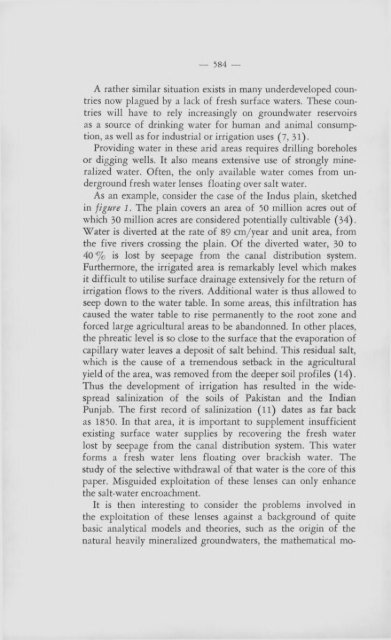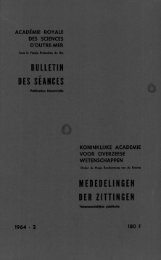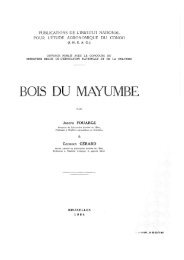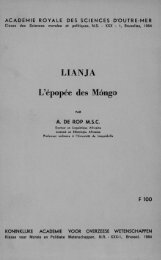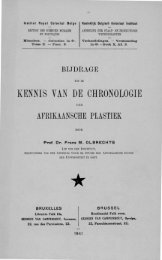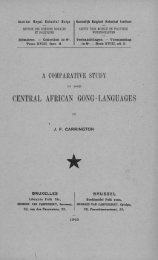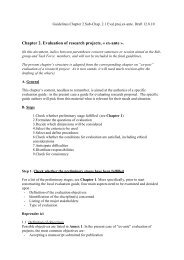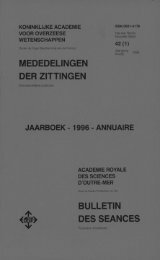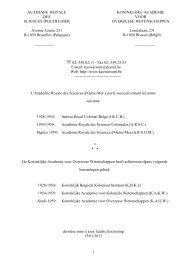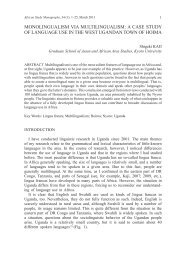(1973) n°3 - Royal Academy for Overseas Sciences
(1973) n°3 - Royal Academy for Overseas Sciences
(1973) n°3 - Royal Academy for Overseas Sciences
You also want an ePaper? Increase the reach of your titles
YUMPU automatically turns print PDFs into web optimized ePapers that Google loves.
— 584 —<br />
A rather similar situation exists in many underdeveloped countries<br />
now plagued by a lack of fresh surface waters. These countries<br />
will have to rely increasingly on groundwater reservoirs<br />
as a source of drinking water <strong>for</strong> human and animal consumption,<br />
as well as <strong>for</strong> industrial or irrigation uses (7, 31).<br />
Providing water in these arid areas requires drilling boreholes<br />
or digging wells. It also means extensive use of strongly mineralized<br />
water. Often, the only available water comes from underground<br />
fresh water lenses floating over salt water.<br />
As an example, consider the case of the Indus plain, sketched<br />
in figure 1. The plain covers an area of 50 million acres out of<br />
which 30 million acres are considered potentially cultivable (34).<br />
W ater is diverted at the rate of 89 cm/year and unit area, from<br />
the five rivers crossing the plain. O f the diverted water, 30 to<br />
40 '% is lost by seepage from the canal distribution system.<br />
Furthermore, the irrigated area is remarkably level which makes<br />
it difficult to utilise surface drainage extensively <strong>for</strong> the return of<br />
irrigation flows to the rivers. Additional water is thus allowed to<br />
seep down to the water table. In some areas, this infiltration has<br />
caused the water table to rise permanently to the root zone and<br />
<strong>for</strong>ced large agricultural areas to be abandonned. In other places,<br />
the phreatic level is so close to the surface that the evaporation of<br />
capillary water leaves a deposit of salt behind. This residual salt,<br />
which is the cause of a tremendous setback in the agricultural<br />
yield of the area, was removed from the deeper soil profiles (14).<br />
Thus the development of irrigation has resulted in the widespread<br />
salinization of the soils of Pakistan and the Indian<br />
Punjab. The first record of salinization (11) dates as far back<br />
as 1850. In that area, it is important to supplement insufficient<br />
existing surface water supplies by recovering the fresh water<br />
lost by seepage from the canal distribution system. This water<br />
<strong>for</strong>ms a fresh water lens floating over brackish water. The<br />
study of the selective withdrawal of that water is the core of this<br />
paper. Misguided exploitation of these lenses can only enhance<br />
the salt-water encroachment.<br />
It is then interesting to consider the problems involved in<br />
the exploitation of these lenses against a background of quite<br />
basic analytical models and theories, such as the origin of the<br />
natural heavily mineralized groundwaters, the mathematical mo-


